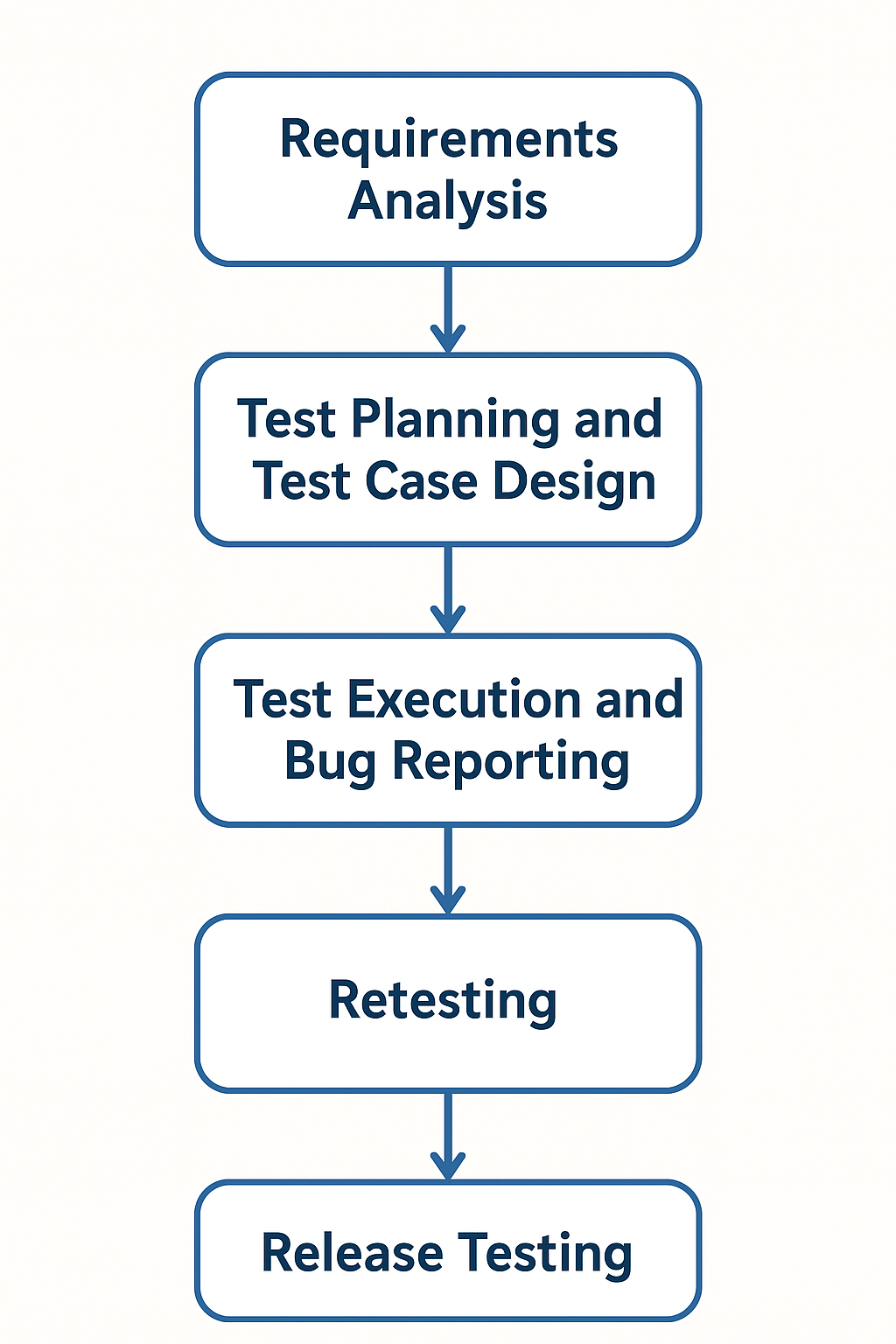Imagine this—your sister Jennifer is coming home after completing her Master’s degree overseas. Your mother is throwing a grand party to celebrate her graduation, and you’re responsible for planning the food arrangements. You carefully choose dishes that suit all guests.
But food is only one part of making the event successful. You also need to handle decorations, send invitations, book the venue, arrange seating, and ensure everything runs smoothly.
This is exactly how Software Testing and Software Quality Assurance (SQA) relate to each other. Testing is like choosing the food—important, but just one part of the bigger picture. SQA covers the entire process to ensure overall success.
What is Software Testing?
Software Testing is a key activity within the broader SQA process. It involves evaluating the software (application, feature, or module) using various testing techniques to find and report bugs.
The main goal is to confirm that the software works as expected, meets business requirements, and delivers a good user experience. Testing focuses on detection—identifying defects that already exist in the software.
What is Software Quality Assurance (SQA)?
Software Quality Assurance is a quality management process that aims to prevent defects before they occur. It ensures that the software development process itself is well-structured, efficient, and capable of producing high-quality products.
SQA covers planning, implementing, and maintaining processes that align with the organization’s quality standards. While testing checks for issues, SQA ensures those issues are less likely to happen in the first place.
Example of a Common SQA Process

1. Requirements Analysis
The QA team reviews:
- Which features are planned for the release.
- Whether these features align with product goals.
- Which areas need testing based on new updates.
Early analysis helps identify risks and set testing priorities.
2. Test Planning and Test Case Design
Once requirements are clear, the QA team:
- Allocates testing resources.
- Prepares detailed test cases (using tools like TestRail).
- Ensures coverage for both scripted and exploratory testing.
3. Test Execution and Bug Reporting
In this stage:
- Testers execute planned test cases.
- Exploratory testing is conducted alongside scripted testing.
- Bugs are logged in tools like JIRA for tracking and resolution.
4. Retesting
After bug fixes:
- Targeted test cases are re-run.
- Fixes are verified to ensure no new issues are introduced.
5. Release Testing
Before going live, testers:
- Perform regression testing to confirm existing features work.
- Verify all new features in the pre-production environment.
Key Takeaway
Just like a party needs more than good food, high-quality software needs more than just testing.
- Software Testing = Detects defects after they occur.
- SQA = Prevents defects through process improvement.
By combining both, teams can create a strong QA strategy that balances prevention and detection, leading to better, more reliable software releases.

 What Giving a Dress Can Teach Us About Software Quality Assurance
What Giving a Dress Can Teach Us About Software Quality Assurance >
>